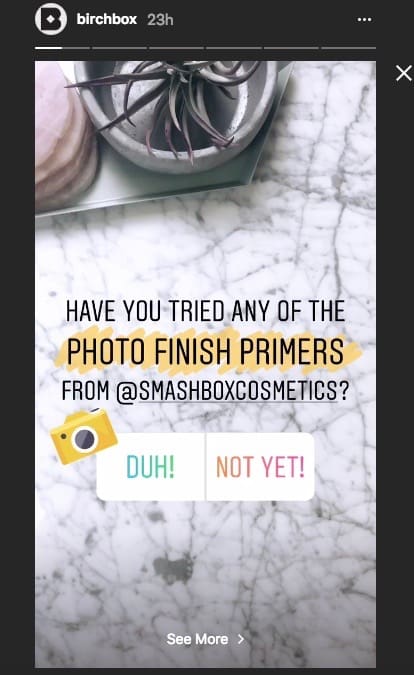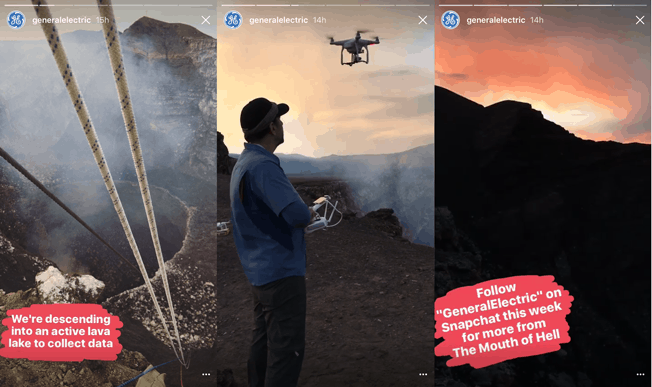Strategy
Now You See It, Now You Don’t: What B2B Brands Can Do With Ephemeral Content
When Instagram debuted the “stories” feature in late 2016, I was skeptical. I had an on-again/off-again relationship with Snapchat, which already had a very similar feature that Instagram was copying. I downloaded Snapchat when all of my new college friends were snapping each other in the fall of my freshman year, deleted it when that became boring, re-downloaded when publishers started making their own Snapchat channels, deleted it again when my phone’s storage was running out, and recently downloaded it again to research this article.
All that is to say that I was wary of Instagram stories initially, because I could not imagine a world in which I’d chose ephemeral posts over permanent ones. A year and a half later, I post stories on Instagram almost every day.
Some brands—usually B2C companies—create content that seems like a perfect fit for an ephemeral timeline. Birchbox, for example, posts teasers for new products, complete with user polls and animated gifs.

For B2B companies, adapting blog posts and long videos for Snapchat and Instagram stories isn’t as simple. Let’s face it, longform how-to articles aren’t exactly set up for five-second views. But don’t let the obstacles deter you. Ephemeral content can still work for B2B brands, and we may see more of it very soon.
According to Later’s The State of Instagram Marketing Report, 76 percent of B2B respondents that don’t use Instagram stories are interested in creating them this year. Ninety-six percent of brands who already use the format say they’ll be upping their ephemeral content production soon, suggesting they’re seeing positive results already.

GE, which operates as both a B2C and a B2B brand, is a great example of how a company that isn’t in fashion, travel, or food can take full advantage of ephemeral content. On Instagram, content has ranged from a walk through the six best things on GE’s showroom floor to behind-the-scenes shots of photoshoots of their products to exotic excursions. There’s also some wild employee adventures to document—like exploring a volcano. Not every B2B brand has that bandwidth, but they can still apply a few of the same principles.

So what do you do if your B2B brand, like most, isn’t descending into volcanoes regularly? Instagram stories can be a good place for quick educational content, like Deloitte Digital often posts. Deloitte’s clips of brand philosophy and AI facts can be read in the few seconds they appear on their story, and are just enough to pique an audience’s interest about their consulting expertise. Deloitte especially takes advantage of posting ephemeral content during events, which is a smart way to drum up engagement outside of a conference hall. Other companies, like NASA, are known to profile their employees via ephemeral content.
On Contently’s Instagram, I occasionally post educational content and quotes from TCS articles. For the most part, though, our Instagram presence exists to showcase the company culture. Every B2B company can use the same approach to help recruiting, regardless of what the brand sells. Think of it this way: Your social media manager can post stories similar to what an audience would find on their friends’ personal accounts. Company outings, parties, and lunchtime shenanigans make for (hopefully) interesting stories which give a humanizing look into your company’s culture.
Instagram stories might be a better fit for B2B brands than Snapchat—at least, until Snapchat finds a better way to house educational content. In the meantime, Instagram profiles allow audiences to get a better overview of your company by letting them scroll through your more permanent posts. But thanks to events like the Shorty Awards, which includes a Best Brands on Snapchat category (the winner of which is chosen by a combination of public votes and scores from the Real Time Academy), it’s worth keeping the platform on your radar and noting whether future updates can support your content distribution efforts.
Now that I’ve come around, I’m excited about the potential for more B2B ephemeral content. True, I wish more of it would include volcano jumping because we all need something to aspire to, but I like the idea that ephemeral content will make us feel more connected to brands, introducing us to the people who make their businesses come to life.
Image by Jakob Owens / UnsplashGet better at your job right now.
Read our monthly newsletter to master content marketing. It’s made for marketers, creators, and everyone in between.




